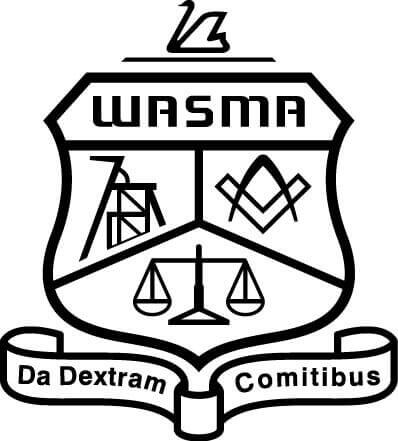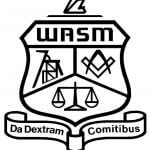Professor S. T. Hall, Executive Director
Mining Education Australia, Western Australian School of Mines, Curtin University
There is a naivety within the general public that the move to a green energy economy signals the end of the mining industry, in particular, the coal industry. The lack of knowledge that the green energy economy is going to rely on an expanded skill set for the mining engineer has significant implications and provision of quality graduates stands out as the most visible. These graduates will need a broad knowledge of the mining value chain covering exploration, mining and processing in addition to well-developed awareness of the speedy innovations in materials science that are driving the green energy economy. Graduates will also need an understanding of global political and business situations as well as strong community engagement skills to promote resource extraction.
The current renewable energy sector (hydro, solar and wind) is dependent upon products of the mining industry such as copper windings in turbines, high-purity silicon in photovoltaics and steel/concrete support structures. Steel production requires metallurgical coal together with the myriad of alloying elements including nickel, molybdenum and chromium. The move to battery storage technologies and electric-powered transport expands the range of mineral commodities that must be supplied. Among them are rare earth magnet materials, copper and nickel. The average battery-powered electric vehicle will contain 80 kilograms of copper, four times as much as an internal-combustion engine (1). Coal-generated electricity might reduce as a percentage of total power generation; however, it is likely to provide important base load generation for many years. Further, there is an opportunity for important resource recovery from ash residues, e.g. magnesium, gallium, and germanium.
The speed of innovation driven by materials science, introduces a greater risk of commodity substitution than in the past. This further supports the requirement for rapid delivery of commodities to market in mine developments. Conversely, the necessary exploration, planning, construction and associated environmental approvals can take 10 years or longer and the whole process can be delayed, or even prevented, through community opposition to mining activity.
Mining industry is well accustomed with the business reality of commodity price cycles and supply-demand relationships. Nevertheless, management of these factors remains challenging for the industry and all stakeholders experience their impacts. Greater ownership of external environmental and social impacts will be necessary in future.
MINING INDUSTRY SKILLS NEEDS
The supply of graduates to the mining industry has become siloed, like the industry itself. Geology is taught as a separate university program that might or might not teach in detail “mining geology” topics. Mining engineering, where taught, is often within the engineering faculty with limited geology and extractive metallurgy content. Extractive metallurgy teaching has often been morphed into materials science offering little direct relevance to the mining industry. Teaching of mineral economics within these programs is generally non-existent. Hence, the development of graduates with an understanding of the value chain required to bring a successful mine servicing the green economy is very limited. This reflects loss of the “School of Mines” philosophy from many developed and developing countries.
Mining engineering student numbers are increasingly coming from the developing world, though the quality of many programs in highly variable (Cedron, 2007). Closures of mining schools and the impact of a highly cyclical industry and anti-mining NGOs across the developed world has resulted in smaller number of graduates from their mining programs despite industry-supported initiatives (Hall, 2016). Further expansion of the accreditation processes worldwide will assist with graduate mobility and a proposed UNESCO Centre for Mining Engineering Education will support greater uniformity in graduate quality. Postgraduate studies as conversion courses for geologists and graduates of other branches of engineering are likely to be increasingly necessary, as will be courses in mineral economics and specialist mining-related postgraduate courses (e.g. geostatistics, geotechnical engineering, mine planning).
The situation in mineral processing and extractive metallurgy is more concerning with even fewer university programs. The move to incorporate these studies with chemical engineering has had some success; however graduates have relatively limited content relevant to the mining industry, poorer mineralogical knowledge and generally less mining industry exposure through site visits and work experience. Where programs link with materials science valuable cross-disciplinary knowledge can result; however the distance from the mining industry will typically further widen.
The global nature of the supply of many commodities on which the green energy economy relies means that the graduate must be comfortable in multicultural environments, in often remote or regional primary production sites to centres for international trade. The careers can be exciting and potentially highly lucrative, but are not obvious to the average high school student.
CONCLUSIONS
The rapid development of the green energy economy is going to further broaden the supply requirements for mineral commodities. This will provide employment opportunities for mining industry professionals (mining geologists, mining engineers, extractive metallurgists and mineral economists).
Diversity of mineral commodities, increased demand and the desire to secure supply from jurisdictions where sovereign risk is low will benefit countries such as Australia. The re-opening of former mining regions, in particular across Europe, is possible and could increase stable supplies; however community opposition might be anticipated and will have to be overcome.
The supply of high-quality graduates in mining geology, mining engineering and extractive metallurgy is limited. The training of such graduates should cover the entire value chain of mineral commodity production, community engagement skills, leadership, entrepreneurship and financial skills. Global mobility will require greater multicultural understanding within graduates and early career mineral industry professionals. The impact of innovation, both technical and in business models, should be appreciated and championed.

The history of the Western Australian School of Mines Alumni (WASMA) reflects the ups and downs of the Western Australian School of Mines (WASM) and the role it has played in supporting graduates in a range of activities and events. It also describes the important role that graduates have played in ensuring WASM remains in Kalgoorlie. Learn more.





